Welcome to “The Art of Gemstone Identification: Tips for Amateur Geologists.” In this guide, we will delve into the fascinating world of gemstone identification, offering valuable insights and techniques specifically tailored for amateur geologists. Whether you’re a hobbyist or a budding enthusiast, understanding the principles behind gemstone identification can greatly enhance your appreciation and knowledge of these precious treasures.
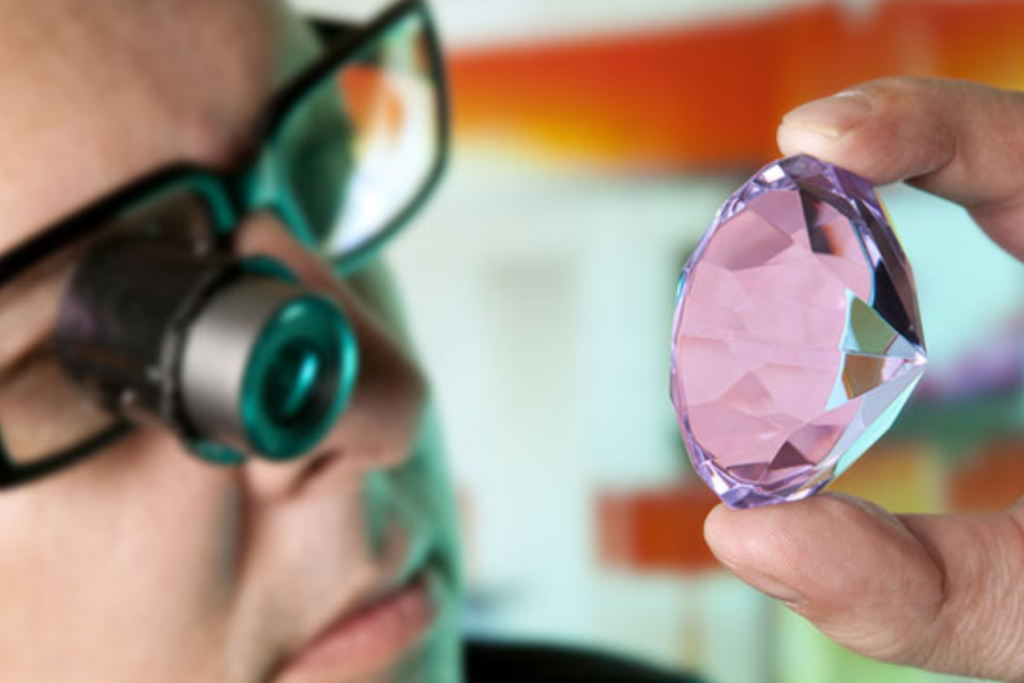
Importance of Gemstone Identification:
Gemstones hold a special allure for many, not only for their beauty but also for their rarity and intrinsic value. However, accurately identifying gemstones is crucial for various reasons. Firstly, it ensures that you are not misled when purchasing or trading gemstones, safeguarding you against fraudulent practices. Additionally, proper identification enables you to appreciate the geological processes that formed these gems, deepening your understanding of Earth’s natural history. Moreover, for amateur geologists, gemstone identification presents an exciting challenge and an opportunity for continuous learning and discovery.
Target Audience: Amateur Geologists
This guide is specifically crafted for amateur geologists who have a keen interest in gemstones but may not have extensive formal training in the field. Whether you’re a student, a hobbyist, or simply someone curious about Earth’s treasures, this guide aims to provide accessible and practical advice to help you develop your skills in gemstone identification. No prior expertise is required; all you need is a passion for geology and a desire to learn.
Overview of the Guide:
Throughout this guide, we will cover a range of topics essential for gemstone identification. We’ll start by discussing the fundamental properties of gemstones, including their color, clarity, hardness, and specific gravity. Understanding these characteristics lays the groundwork for accurate identification.
Next, we’ll explore various testing methods and tools commonly used in gemstone identification. From simple visual inspections to more advanced techniques like refractometry and spectroscopy, we’ll provide step-by-step instructions and practical tips to help you conduct reliable tests.
Furthermore, we’ll delve into the specific characteristics of popular gemstone varieties, such as diamonds, rubies, sapphires, emeralds, and more. Each section will highlight key distinguishing features and potential pitfalls to watch out for when identifying these gems.
Finally, we’ll conclude with guidance on where to find gemstones, ethical considerations in gemstone collecting, and resources for further learning and exploration.
Whether you’re hunting for gemstones in the field, examining specimens in your collection, or simply marveling at the beauty of these natural wonders, “The Art of Gemstone Identification” is your comprehensive companion on this captivating journey. So, let’s embark together and unlock the secrets of Earth’s precious jewels!
Understanding Gemstones:
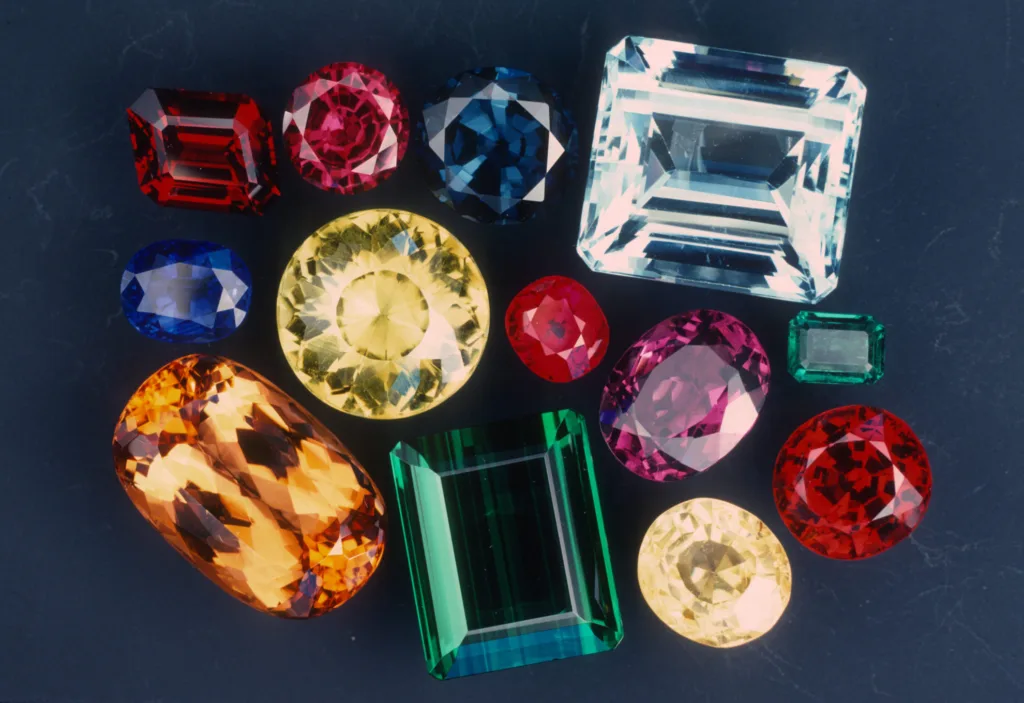
Gemstones are naturally occurring minerals prized for their beauty, rarity, and durability. They have been treasured for millennia for use in jewelry, adornment, and as symbols of wealth and status. To effectively identify gemstones, it’s crucial to understand their defining characteristics, formation processes, and classification.
Definition of Gemstones:
Gemstones are minerals or organic materials that possess qualities such as rarity, beauty, durability, and often translucency or transparency. These qualities make them suitable for use in jewelry and other decorative purposes. Gemstones are typically cut and polished to enhance their appearance, revealing their inherent brilliance and color.
Types of Gemstones:
Gemstones are broadly categorized into two main types: precious and semi-precious.
- Precious Gemstones: Precious gemstones are valued for their exceptional rarity, beauty, and high price. Historically, these gemstones included diamonds, rubies, sapphires, and emeralds. However, the classification of “precious” is more traditional and subjective, and today, other factors such as color, clarity, and size also influence a gemstone’s value.
- Semi-Precious Gemstones: Semi-precious gemstones encompass a wide range of minerals that, while still prized for their beauty and durability, are more abundant and affordable compared to precious gemstones. Examples of semi-precious gemstones include amethyst, citrine, garnet, turquoise, and many others.

Formation Processes:
Gemstones form through various geological processes that occur deep within the Earth’s crust or near its surface. Some common formation processes include:
- Igneous: Gemstones such as diamonds, sapphires, and rubies can form within igneous rocks through high-pressure and high-temperature conditions deep within the Earth’s mantle.
- Metamorphic: Pressure and heat from tectonic movements can transform existing minerals into gemstones. Examples include jade, garnet, and certain types of sapphires.
- Sedimentary: Gemstones like opals and certain types of agates form within sedimentary rocks through the deposition and solidification of mineral-rich solutions.
- Organic: Organic gemstones such as pearls, amber, and coral originate from living organisms or organic materials that undergo mineralization over time.
Common Characteristics:
Gemstones exhibit a variety of characteristics that contribute to their identification and value. Some common characteristics include:
- Color: The color of a gemstone is one of its most distinctive features and can vary widely within the same mineral species.
- Clarity: Clarity refers to the presence of inclusions or imperfections within a gemstone. Some gemstones are valued for their flawless clarity, while others, like emeralds, may have characteristic inclusions known as “jardin.”
- Hardness: Hardness, measured on the Mohs scale, indicates a gemstone’s resistance to scratching and abrasion. Diamonds, with a Mohs hardness of 10, are the hardest naturally occurring minerals.
- Specific Gravity: Specific gravity is the density of a gemstone relative to the density of water and can help distinguish between different gemstone varieties.
By understanding these fundamental characteristics and formation processes, amateur geologists can begin to confidently identify and appreciate the diverse world of gemstones.
Tools and Equipment for Gemstone Identification
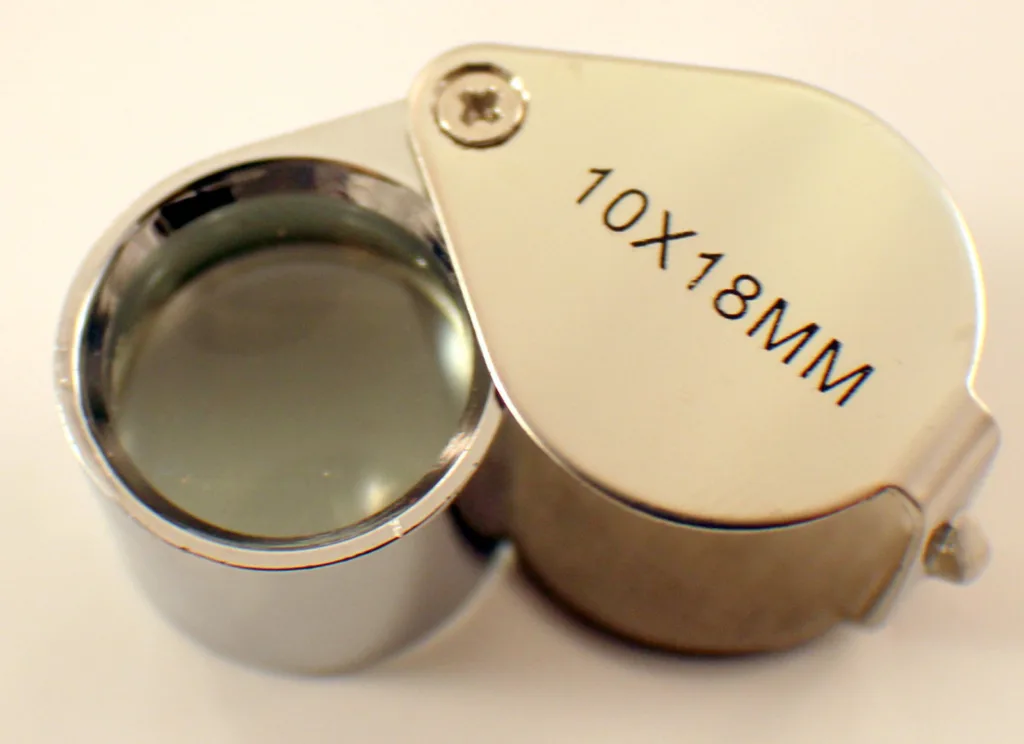
- Magnifying Tools: Magnifying tools are essential for examining the details of gemstones up close. The most common magnifying tools used by amateur geologists include:
- Jeweler’s Loupe: A small, handheld magnifying device typically featuring a single lens or multiple lenses that can provide magnification ranging from 5x to 20x.
- Microscope: A more advanced option that allows for higher magnification and greater detail. Stereo microscopes, which provide a three-dimensional view, are particularly useful for gemstone examination.

- UV Light: UV (ultraviolet) light is a valuable tool for identifying certain characteristics of gemstones, including fluorescence and phosphorescence. Gemstones may emit visible light when exposed to UV light, which can aid in distinguishing between natural and synthetic stones, as well as detecting treatments or enhancements.
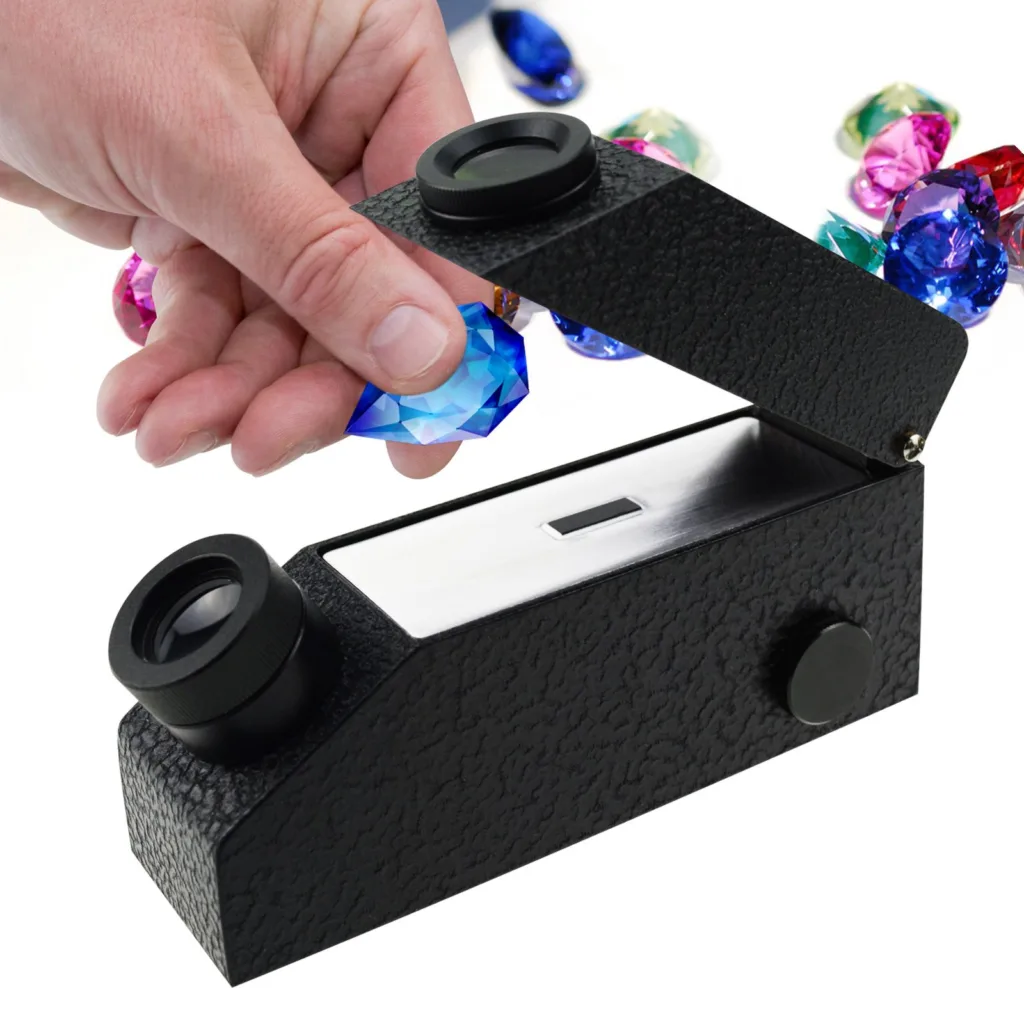
- Refractometer: A refractometer measures the refractive index of a gemstone, which is the speed at which light passes through it. This tool is particularly useful for identifying gemstones by comparing their refractive indices to known values for various gemstone species. A gemstone’s refractive index can also help determine its authenticity and potential treatments.
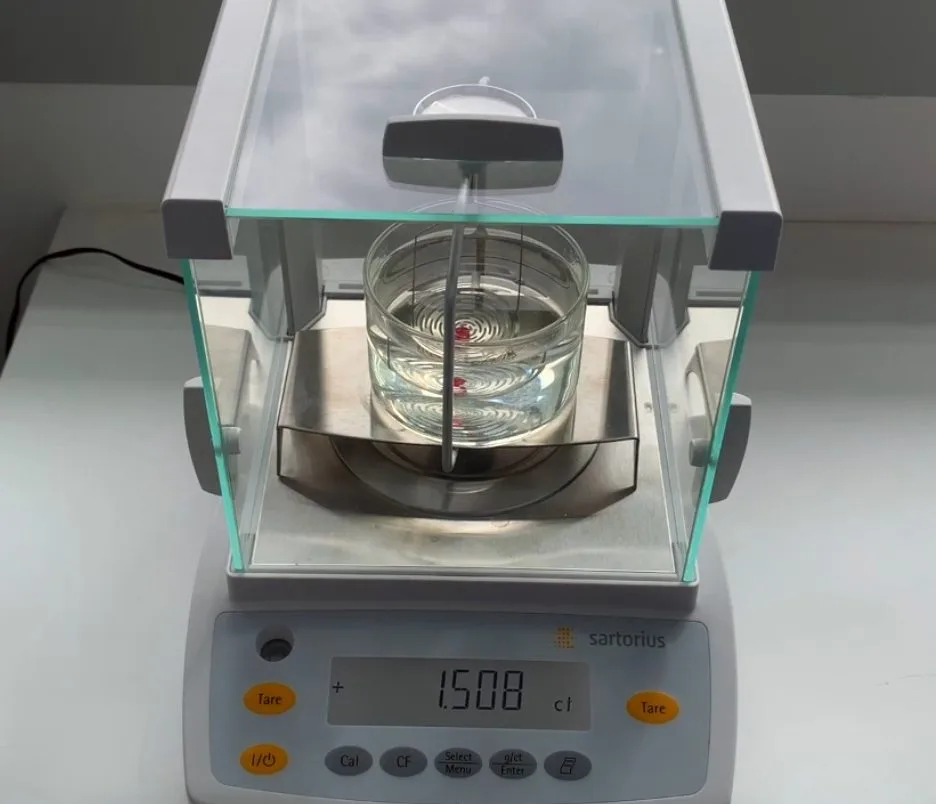
- Specific Gravity Testing Equipment: Specific gravity testing equipment is used to determine the density or relative heaviness of a gemstone compared to an equal volume of water. This measurement can help identify gemstones by comparing their specific gravity to known values for different gemstone varieties. Common specific gravity testing methods include:
- Hydrostatic Weighing: Submerging the gemstone in water and measuring the displaced volume to calculate specific gravity.
- Electronic Specific Gravity Balance: A specialized scale that measures both weight and volume to calculate specific gravity accurately.
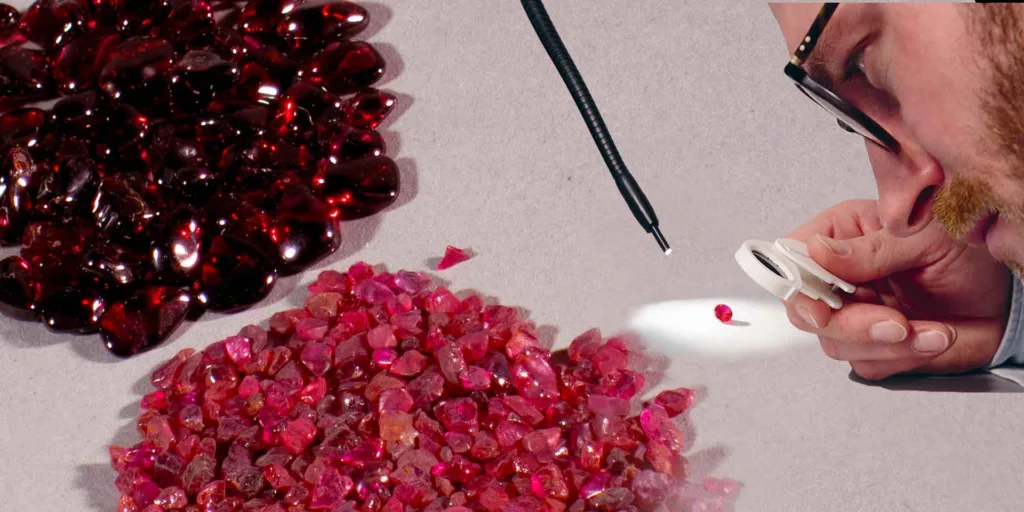
- Other Essential Tools:
- Chelsea Filter: A specialized filter used to observe the absorption spectra of gemstones, aiding in the identification of certain gemstone types and treatments.
- Dichroscope: A handheld instrument that allows gemologists to observe the pleochroism (color changes) exhibited by gemstones when viewed from different angles. This can help identify gemstone species and distinguish between natural and synthetic stones.
- Gemstone Testing Kit: A comprehensive kit containing various testing tools and chemicals for conducting a range of gemstone identification tests, including hardness testing, thermal conductivity testing, and more.
These tools and equipment are indispensable for amateur geologists seeking to accurately identify and evaluate gemstones. While some may require a learning curve, mastering their use can greatly enhance your ability to appreciate and understand the world of gemstones.
Physical Properties for Identification
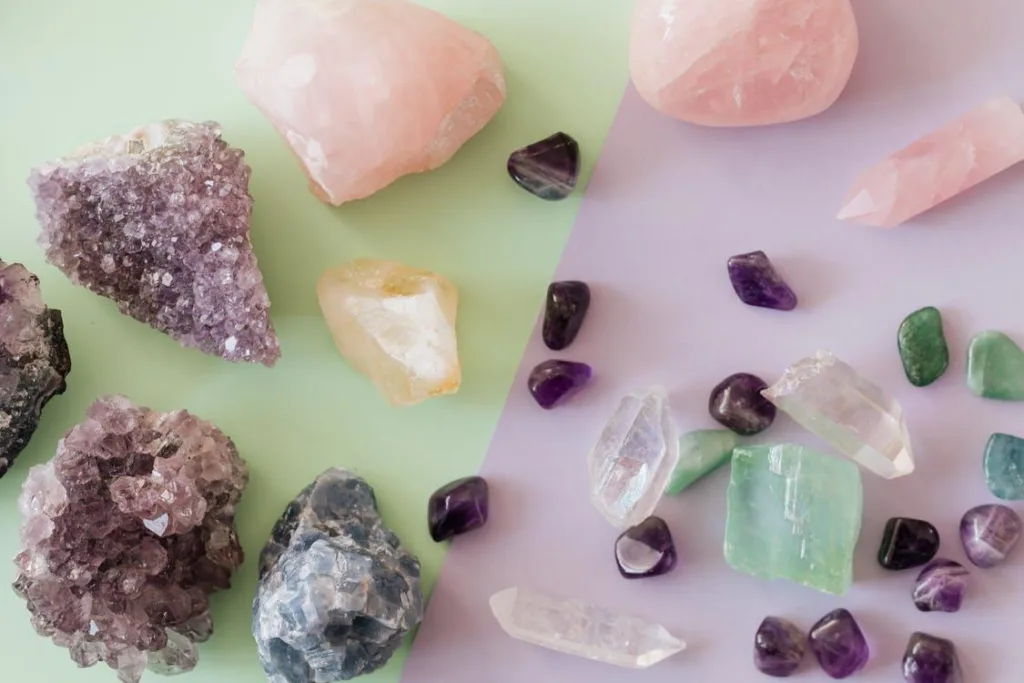
Physical properties play a crucial role in identifying gemstones. Here are some key physical properties used in gemstone identification:
- Color:
- Color is often the first characteristic noticed in a gemstone and can vary widely within the same mineral species. Some gemstones, like amethyst and emerald, are valued for their distinct colors, while others, like diamonds, are prized for their colorlessness (white diamonds) or presence of vivid hues (fancy colored diamonds).
- Transparency/Translucency/Opaqueness:
- Transparency refers to the degree to which light passes through a gemstone. Gemstones can be transparent (allowing light to pass through clearly), translucent (allowing some light to pass through but scattering it), or opaque (not allowing any light to pass through). Examples include transparent diamonds, translucent jade, and opaque turquoise.
- Luster:
- Luster describes the way light interacts with the surface of a gemstone. It can range from adamantine (sparkling like a diamond) to vitreous (glassy), pearly, silky, or metallic. Luster is influenced by the gemstone’s refractive index and surface properties.
- Hardness:
- Hardness refers to a mineral’s resistance to scratching and abrasion. The Mohs scale, ranging from 1 (softest) to 10 (hardest), is commonly used to measure hardness. For example, diamond, with a Mohs hardness of 10, can scratch all other minerals, while talc, with a hardness of 1, can be easily scratched by other minerals.
- Cleavage and Fracture:
- Cleavage is the tendency of a mineral to break along specific planes of weakness, producing smooth, flat surfaces. Fracture describes the way a mineral breaks when it does not cleave. Common types of fracture include conchoidal (smooth, curved fractures like those of glass) and splintery (elongated, fibrous fractures).
- Specific Gravity:
- Specific gravity is the density of a gemstone relative to the density of water. It helps distinguish between different gemstone varieties and can be measured using specific gravity testing equipment. For example, the specific gravity of diamond is approximately 3.52, while that of quartz is around 2.65.
- Refractive Index:
- Refractive index (RI) is the speed at which light travels through a gemstone. It can vary depending on the gemstone’s chemical composition and crystal structure. Refractive index is measured using a refractometer and is a key characteristic used in gemstone identification.
By carefully observing and evaluating these physical properties, amateur geologists can begin to identify and appreciate the unique characteristics of different gemstones. Additionally, conducting specific tests and using specialized equipment can provide further insight into a gemstone’s identity and authenticity.
Optical Properties for Identification
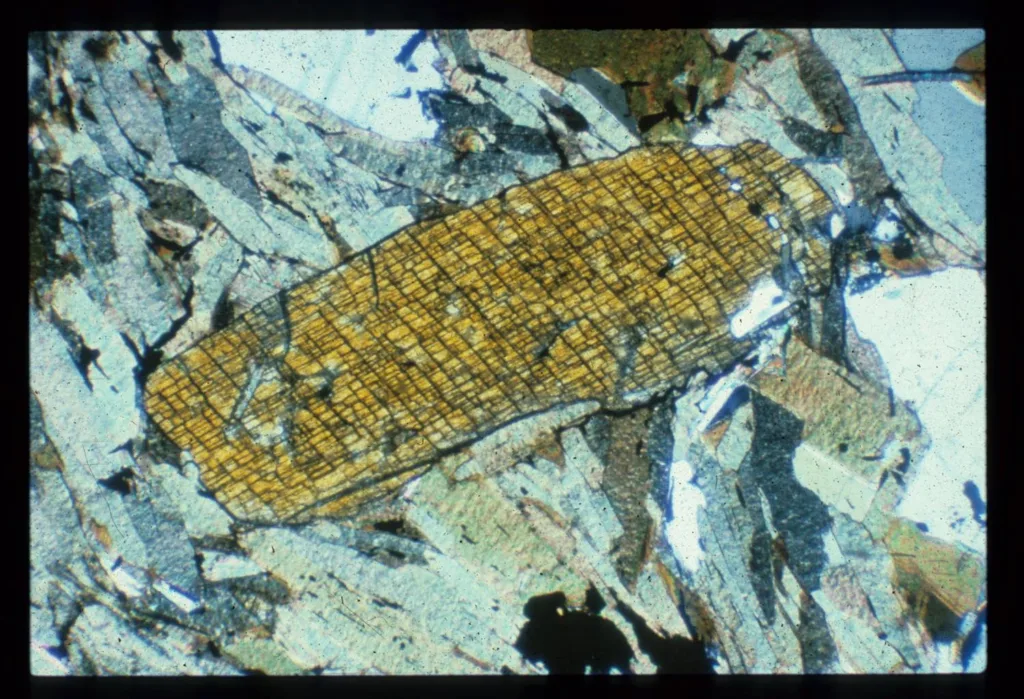
Optical properties are critical for identifying gemstones and can provide valuable insights into their composition and quality. Here are some key optical properties used in gemstone identification:
- Refractive Index (RI):
- Refractive index refers to the degree to which light is bent, or refracted, as it enters a gemstone. Each gemstone has a unique refractive index, which is influenced by its chemical composition and crystal structure. Gemologists measure refractive index using a refractometer, comparing it to known values to identify gemstone species.
- Dispersion:
- Dispersion is the ability of a gemstone to separate white light into its component colors, creating a spectral “fire” effect. Diamonds, with their high dispersion, exhibit strong fire, while gemstones like sphalerite and zircon also display notable dispersion. Gemologists often observe dispersion through a gemstone’s faceted surfaces under proper lighting conditions.
- Pleochroism:
- Pleochroism refers to the phenomenon where a gemstone exhibits different colors when viewed from different angles. Certain gemstones, such as iolite, tourmaline, and tanzanite, may display pleochroism due to variations in crystal orientation and mineral structure. Gemologists use a dichroscope to observe and analyze pleochroism.
- Birefringence:
- Birefringence is the optical property of a gemstone that causes double refraction of light, splitting it into two distinct rays with different velocities. This effect is particularly evident in gemstones with anisotropic crystal structures, such as calcite and tourmaline. Gemologists can observe birefringence using a polariscope or conoscope.
- Color:
- Color is a crucial optical property used in gemstone identification. Gemstones exhibit a diverse range of colors due to various factors, including trace elements, structural defects, and light absorption. Gemologists assess color based on hue, tone (lightness or darkness), and saturation (intensity). Some gemstones, like sapphires and emeralds, are valued for specific colors.
- Transparency:
- Transparency refers to the extent to which light passes through a gemstone without being scattered or absorbed. Gemstones can be transparent, translucent, or opaque, influencing their appearance and value. Transparency is assessed visually or quantitatively using instruments such as spectrophotometers.
- Luminescence:
- Luminescence is the emission of light by a gemstone when stimulated by external energy sources, such as UV light. Gemstones may exhibit fluorescence (emitting visible light) or phosphorescence (emitting light after the energy source is removed). Observing luminescence can help identify gemstones and detect treatments.
By understanding and evaluating these optical properties, amateur geologists can effectively identify and appreciate the unique characteristics of different gemstones. Utilizing specialized tools and conducting specific tests allows for accurate gemstone identification and enhances the overall understanding of their optical behavior.
Gemstone Testing Techniques
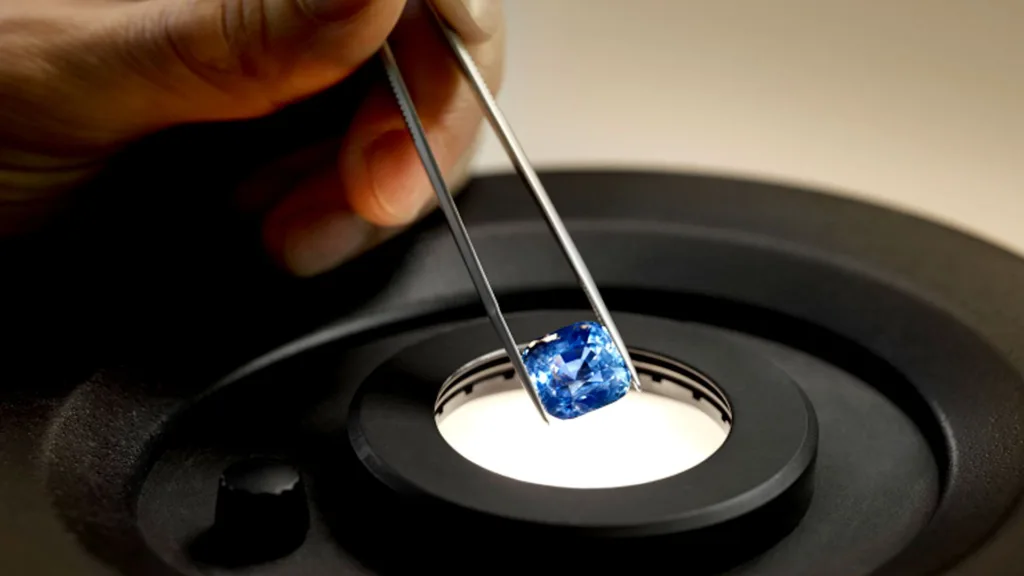
Gemstone testing techniques are essential for accurately identifying gemstones and assessing their quality. Here are some commonly used techniques:
- Visual Inspection:
- Visual inspection involves examining a gemstone’s color, transparency, luster, and overall appearance using the naked eye or magnifying tools such as a jeweler’s loupe or microscope. Gemologists assess characteristics such as inclusions, surface features, and color distribution to help identify the gemstone.
- Refractometer:
- A refractometer measures a gemstone’s refractive index, which is the speed at which light travels through the gemstone. By comparing the refractive index to known values for different gemstone species, gemologists can identify the gemstone. Refractometers are particularly useful for distinguishing between gemstone varieties with similar appearances.
- Spectroscope:
- A spectroscope analyzes a gemstone’s absorption spectrum, which is the pattern of light absorption at different wavelengths. Each gemstone species has a characteristic absorption spectrum due to its unique chemical composition. Gemologists use spectroscopes to identify gemstones based on their absorption patterns and detect certain treatments or enhancements.
- Chelsea Filter:
- A Chelsea Filter is a specialized filter that transmits specific wavelengths of light, allowing gemologists to observe a gemstone’s absorption characteristics. Chelsea Filters are particularly useful for identifying certain gemstone species, such as emeralds and red stones, based on their distinctive reactions to the filter’s light.
- Specific Gravity Testing:
- Specific gravity testing determines a gemstone’s density relative to the density of water. Gemologists weigh the gemstone in air and then in water to calculate its specific gravity. By comparing the specific gravity to known values for different gemstone species, gemologists can narrow down the possible identifications for the gemstone.
- UV Light Examination:
- UV light examination involves exposing a gemstone to ultraviolet light and observing its fluorescence or phosphorescence. Different gemstones exhibit characteristic responses to UV light, which can aid in identification. UV light examination is also used to detect treatments or enhancements, as treated gemstones may fluoresce differently than untreated ones.
- Thermal Conductivity Testing:
- Thermal conductivity testing involves measuring a gemstone’s ability to conduct heat using a thermal conductivity probe or instrument. Certain gemstones, such as diamonds, have high thermal conductivity, while others have lower conductivity. Thermal conductivity testing can help identify diamond simulants and distinguish between natural and synthetic diamonds.
By employing these gemstone testing techniques in combination with each other, gemologists can accurately identify gemstones and assess their quality, authenticity, and potential treatments or enhancements. Each technique provides unique insights into the gemstone’s properties, aiding in comprehensive gemstone analysis.
Common Gemstones and Their Identification
Here are some common gemstones and key identification characteristics for each:
- Diamond:
- Identification Characteristics:
- Hardness: Diamond is the hardest known natural material, scoring 10 on the Mohs scale.
- Refractive Index: High refractive index (approximately 2.42) and strong dispersion, resulting in exceptional brilliance and fire.
- Fluorescence: Some diamonds exhibit fluorescence when exposed to UV light.
- Color: Diamonds can occur in various colors, including white, yellow, brown, pink, blue, and green.
- Inclusions: Diamonds may contain inclusions such as crystals, clouds, feathers, or internal graining.
- Identification Characteristics:
- Ruby:
- Identification Characteristics:
- Color: Intense red hue due to chromium impurities.
- Hardness: Ruby has a hardness of 9 on the Mohs scale.
- Refractive Index: High refractive index (approximately 1.76) and vitreous luster.
- Fluorescence: Some rubies may exhibit fluorescence under UV light.
- Inclusions: Rubies often contain needle-like rutile inclusions known as “silk.”
- Identification Characteristics:
- Sapphire:
- Identification Characteristics:
- Color: Blue is the most common color for sapphires, but they can also occur in various colors, including pink, yellow, green, purple, and orange.
- Hardness: Sapphire has a hardness of 9 on the Mohs scale.
- Refractive Index: High refractive index (approximately 1.76) and vitreous luster.
- Inclusions: Sapphires may contain rutile needles, silk, or color zoning.
- Identification Characteristics:
- Emerald:
- Identification Characteristics:
- Color: Deep green color due to chromium or vanadium impurities.
- Hardness: Emerald has a hardness of 7.5 to 8 on the Mohs scale.
- Refractive Index: Moderate to high refractive index (approximately 1.57 to 1.59) and vitreous to subadamantine luster.
- Inclusions: Emeralds commonly contain visible inclusions called “jardin,” which are often fractures filled with liquid or gas.
- Identification Characteristics:
- Amethyst:
- Identification Characteristics:
- Color: Purple to violet coloration due to trace amounts of iron.
- Hardness: Amethyst has a hardness of 7 on the Mohs scale.
- Refractive Index: Moderate refractive index (approximately 1.54 to 1.55) and vitreous luster.
- Inclusions: Amethyst may contain inclusions such as gas bubbles, mineral crystals, or color zoning.
- Identification Characteristics:
- Topaz:
- Identification Characteristics:
- Color: Topaz occurs in a range of colors, including blue, yellow, pink, orange, and colorless.
- Hardness: Topaz has a hardness of 8 on the Mohs scale.
- Refractive Index: Moderate to high refractive index (approximately 1.61 to 1.64) and vitreous luster.
- Cleavage: Topaz exhibits perfect basal cleavage.
- Identification Characteristics:
These are just a few examples of common gemstones and their identification characteristics. When identifying gemstones, it’s essential to consider a combination of factors such as color, hardness, refractive index, and any unique identifying features or inclusions. Utilizing specialized tools and testing methods can further aid in accurate gemstone identification.
Final tips for amateur geologists on gemstone identification
Final Tips for Amateur Geologists on Gemstone Identification:
- Learn and Practice: Gemstone identification is a skill that improves with knowledge and experience. Study the characteristics of different gemstones, familiarize yourself with identification techniques, and practice identifying specimens whenever possible.
- Utilize Reference Materials: Invest in reliable reference books, online resources, and educational materials on gemstone identification. These resources provide valuable information on gemstone properties, identification techniques, and common pitfalls to avoid.
- Use Multiple Testing Methods: Employ a variety of testing methods and tools, such as visual inspection, refractometry, spectroscopy, and specific gravity testing, to corroborate your findings and enhance accuracy. Different gemstones may require different testing approaches for accurate identification.
- Pay Attention to Detail: Take the time to thoroughly examine gemstones, paying close attention to color, clarity, luster, hardness, and any unique identifying features or inclusions. Even subtle differences can provide valuable clues to aid in identification.
- Practice Good Gemstone Handling: Handle gemstones with care to avoid damage or contamination. Use clean hands, appropriate tools, and protective measures to minimize the risk of accidents or mishaps during examination and testing.
- Seek Professional Guidance: Don’t hesitate to consult with experienced gemologists, geologists, or certified appraisers for assistance with challenging identifications or for validation of your findings. Networking with fellow enthusiasts can also provide valuable insights and support.
- Stay Ethical and Responsible: Practice ethical collecting and trading practices by obtaining gemstones from reputable sources and respecting legal and environmental regulations. Be wary of fraudulent practices and treatments, and prioritize transparency and honesty in all your gemstone-related activities.
- Keep Learning and Exploring: Gemstone identification is a lifelong journey of discovery. Stay curious, continue learning about new gemstone varieties, testing methods, and developments in the field. Participate in workshops, seminars, and field trips to expand your knowledge and skills.
- Enjoy the Process: Above all, enjoy the process of gemstone identification and exploration. Each gemstone tells a unique story of its formation and journey through the Earth’s depths. Embrace the beauty and wonder of these natural treasures as you uncover their secrets and unravel their mysteries.
By following these tips and approaches, amateur geologists can develop their expertise in gemstone identification, deepen their appreciation for Earth’s geological wonders, and embark on an enriching and fulfilling journey in the world of gemstones.





































